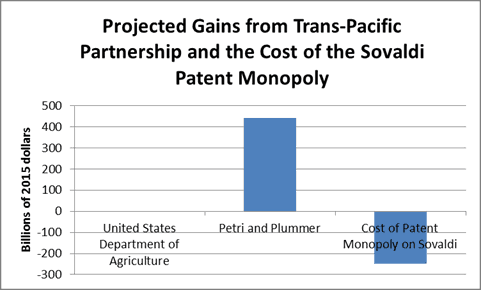POSTED BY COURTENAY C. BRINCKERHOFF ON 3 NOVEMBER 2011POSTED IN FEDERAL CIRCUIT DECISIONS;PATENT TERM EXTENSIONI wrote previously about the patentability issues raised in Genetics Institute, LLC v. Novartis Vaccines & Diagnostics, Inc., and Novartis’ ability to rely on unexpected results discovered after the filing date to support non-obviousness. Here, I look at another interesting issue in the case, related to the scope of a patent term extension under 35 USC § 156 and district court jurisdiction under 35 USC § 291.
The Technology At Issue
The technology at issue relates to truncated forms of Factor VIII, an essential blood-clotting protein. As explained in the Federal Circuit opinion, the proper functioning of Factor VIII depends on its ability to bind another protein, von Willedbrand factor (“vWF”), although Factor VIII can exhibit a procoagulant effect without complexing to vWF. Truncated forms of Factor VIII are based on the discovery that certain portions of the protein are not required for its procoagulant activity, and that region a3 is critical to vWF binding.
The Patents At Issue
Genetics Institute owns U.S. Patent 4,868,112, which was filed April 11, 1986 with a priority claim to April 12, 1985. The patent was granted September 19, 1989. The patent’s term was extended to February 28, 2010 under 35 USC § 156 based on the regulatory review of Genetics’ ReFacto® product.
Novartis owns U.S. Patent 6,228,620 and U.S. Patent 6,060,447, both of which claim priority to an application filed January 27, 1986.
The Jurisdiction Question
Genetics sued Novartis on May 16, 2008, in a district court interference proceeding under 35 USC § 291:
The owner of an interfering patent may have relief against the owner of another by civil action, and the court may adjudge the question of validity of any of the interfering patents, in whole or in part.
Genetics asserted that an interference in fact existed between claims 1, 5, 9 and 10 of its ‘112 patent and certain claims of the Novartis patents.
But for the patent term extension under § 156, the Genetics patent would have expired September 19, 2006 (17 years after its issue date). Novartis argued that because the patent term extension related only to claims 9 and 10, the district court lacked jurisdiction to address claims 1 and 5. Novartis also argued that, under the district court’s claim construction, claim 10 does not cover Genetics’ ReFacto® product, and so that claim also does not fall under the patent term extension and so also is beyond the court’s jurisdiction.
The Patent Term Extension Statute
The opening clause of § 156 provides (in part):
(a) The term of a patent which claims a product, a method of using a product, or a method of manufacturing a product shall be extended in accordance with this section . . . if –
***
(4) the product has been subject to a regulatory review period before its commercial marketing or use;
The next clause provides (in part):
(b) . . . the rights derived from any patent the term of which is extended under this section shall during the period during which the term of the patent is extended –
(1) in the case of a patent which claims a product, be limited to any use approved for the product . . .
(2) in the case of a patent which claims a method of using a product, be limited to any use claimed by the patent and approved for the product . . .
(3) in the case of a patent which claims a method of manufacturing a product, be limited to the method of manufacturing as used to make –
(A) the approved product, or
(B) the product if it has been subject to a regulatory review period described in . . . .
The Federal Circuit Decision
The Federal Circuit rejected Novartis’ argument that the patent term extension applied on a claim by claim basis, and agreed with Genetics that it applied to the patent as a whole.
In so doing, the Federal Circuit cited language in § 156(a) which states that “the term of a patent. . . shall be extended.” The Federal Circuit distinguished this language from the “rights derived” language in § 156(b). According to the court:
[s]ubsection (b) was intended not to restrict the extension to particular claims, but rather to limit the effect of the extension.
(Before this case, I might have thought that was a distinction without a difference!)
The Federal Circuit also was not persuaded by the identification of only selected claims in Genetics’ application for patent term extension. The court distinguished the requirements for the application from “the legal effect of the patent term extension itself.”
With regard to the specific claims at issue, the Federal Circuit explained that if claim 9 covers Genetics’ ReFacto® product (which Novartis did not challenge), claims 1 and 5 must as well, because claim 9 depends from those claims. The Federal Circuit also noted that the district court did not expressly find that claim 10 did not cover ReFacto®.
The court also confirmed that, as a general principle, a patent extended under § 156 can form the basis of a § 291 interference action.
Thus, the Federal Circuit rejected Novartis’ jurisdictional arguments and upheld the district court’s jurisdiction over the interference.
A Tangled Web
The patent term extension statute is one of the more complex statutes of the Patent Act (at least until the America Invents Act came along!). Several cases have considered the scope of the extended rights vis-à-vis specific accused products, but this case originates from a broader perspective, and holds that a patent term extension prolongs the life of the patent as a whole, even if the extended right to exclude is more limited.



